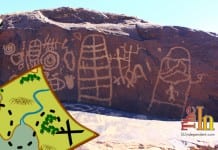
Gov. Herbert rescinds 2018 emergency drought declaration
By Nathan Schwebach
A strong water year has put an end to Utah’s severe drought conditions. As a result, Gov. Gary Herbert has officially rescinded the 2018 executive order that declared a statewide emergency due to drought.
“Utah experienced unprecedented drought conditions last year, which harmed the livelihood of many families and strained agricultural producers, industry and even wildlife and recreation,” said Gov. Herbert. “Even in a normal year, water in Utah is a scarce natural resource. We should appreciate what we received, but not take it for granted. Let us continue to do all we can to conserve water as communities, industries, neighborhoods, and families.”
Precipitation in 2019 has been well above normal statewide with regional averages between 110 to 200 percent of normal according to the Colorado Basin River Forecast Center, the agency that reports precipitation for Utah. The heavy precipitation significantly reduced drought conditions throughout Utah.
According to the U.S. Drought Monitor, a collaborative group of individuals from the University of Nebraska Lincoln and federal agencies, no area of the state is currently experiencing severe drought conditions. About 15 percent of Utah — primarily areas of San Juan, Kane, and Washington Counties — is experiencing moderate drought. The rest of Utah is either abnormally dry or experiencing average conditions. When the governor declared the drought emergency, 99 percent of the state was in a moderate drought with over 88 percent of Utah experiencing at least severe drought conditions.
Herbert initially issued the emergency drought declaration last October under the recommendation of the Utah Drought Review and Reporting Committee. Drought conditions had developed to the degree that several areas throughout Utah had experienced severe impact to various sectors of their economies.
The declaration allowed drought-affected communities, agriculture producers, and others to begin the process of accessing state or federal resources. In addition to the governor’s declaration, emergency drought disasters were declared by six rural Utah counties including Box Elder, Carbon, Emery, Grand, San Juan, and Wayne Counties.
Agencies represented on the committee include the DNR; the Governor’s offices of Management and Budget and Economic Development; the Departments of Environmental Quality, Agriculture and Food, and Community and Economic Development; and the Divisions of Emergency Management, Wildlife Resources, and Forestry, Fire and State Lands.



